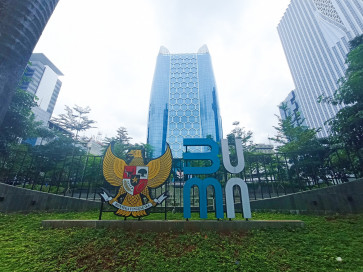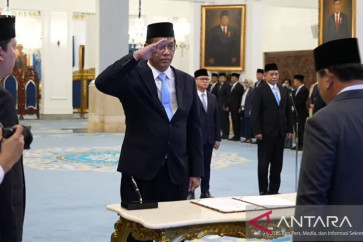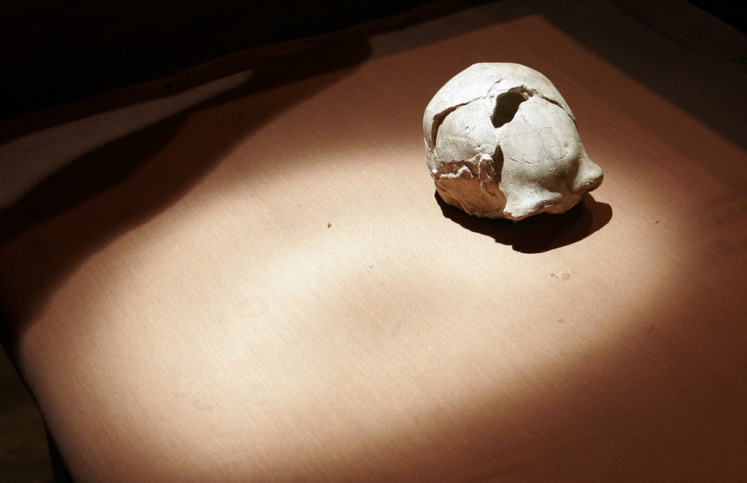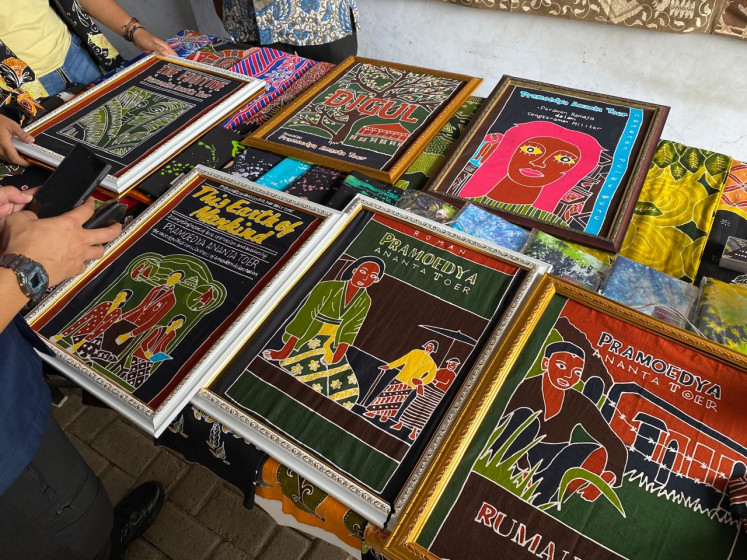Popular Reads
Top Results
Can't find what you're looking for?
View all search resultsPopular Reads
Top Results
Can't find what you're looking for?
View all search resultsTraditional Thai dance close to Balinese heart
THAI EPIC: Two Thai artists perform the Pursuit of Supanna Matcha, a traditional dance inspired by Ramakien, the Thai adaptation of the Hindu epic Ramayana at the Denpasar Art Center as part of the 30th Bali Art Festival
Change text size
Gift Premium Articles
to Anyone
THAI EPIC: Two Thai artists perform the Pursuit of Supanna Matcha, a traditional dance inspired by Ramakien, the Thai adaptation of the Hindu epic Ramayana at the Denpasar Art Center as part of the 30th Bali Art Festival. (JP/Irawaty Wardany)
The Pursuit of Supanna Matcha, a traditional Thai dance performed by two Thai dancers, had finished but the audience stayed in their seats waiting eagerly for more.
Thailand's Songkhla Rajabat University Art and Culture Office organized a series of dances at Denpasar Art Center on Monday night, as part of the 30th Bali Art Festival.
While Thai dances may not be as spectacular as traditional Balinese dances, accompanied by dozens of Balinese gamelan players, the audience could see similarities between the two, both in the movements and stories behind them.
The Pursuit of Supanna Matcha, for example, is based on the story of Ramakien, a Thai adaptation of the Hindu epic of Ramayana. This epic is very close to the heart of the Balinese.
The dance depicts the tale of Supanna Matcha, the daughter of a fish, and Thotsakan, the ogre king of Krung Longka.
Supana Matcha had the form of a mermaid (half woman, half fish) and ruled the ocean as queen of the fishes. When Phra Ram (Rama), the prince of Ayuthaya (Ayodhya), ordered his simian army to build a stone bridge from the mainland to the island of Krung Longka, Supanna Matcha told her fish army to remove the stones.
Phra Ram then sent Hanuman in pursuit of the culprit. The white monkey sought out Sapanna Matcha in the depths of the ocean and captured her.
The two dancers playing Hanuman and Supanna Matcha developed a connection with the audience when they came down from stage and mingled with the audience.
Supanna Matcha hid among the audience while Hanuman was busy looking for her. Some members of audience even gave him some money when Hanuman asked them where Matcha was.
After the Pursuit of Supanna Matcha, the troupe also performed Serng Grabo (coconut shell), which is usually played by a group of unmarried girls in Irsan, the northwest part of Thailand especially in Surin, Sisaket and Buriram Provinces.
The agile dancers portrayed the cheerful and fun spirit of youth. The movements reminded the audience of the Piring dance of the Minangkabau tribe in West Sumatra, and the Pa'Gellu dance from Toraja in South Sulawesi.
Indonesian Art Institute (ISI) rector I Wayan Rai also acknowledged the similarities between traditional Thai and Indonesian dances.
"We have many similarities with Thailand, like the Ramayana story," he said.
These similarities had allowed the Indonesian audience to easily engage with the dances performed that night, he said.
Besides the two dances, the troupe also performed the Happiness, Nora, Theut-Theung and Ramwong dances.
"It would be interesting to find out whether there are actual historical connections between our cultures," Rai said.
ISI and Songkhla Rajabhat University signed a memorandum of understanding in 2006 to strengthen cooperation between two universities, he said.
"We are developing cooperative ties in education, research and exhibitions," he said, adding that he expected both universities would learn much about each other's cultures.
Adul Meatan, of the Indonesian consulate in Songkhla, said the MOU with ISI was a chance for Thailand to introduce its art and culture to Indonesia.










